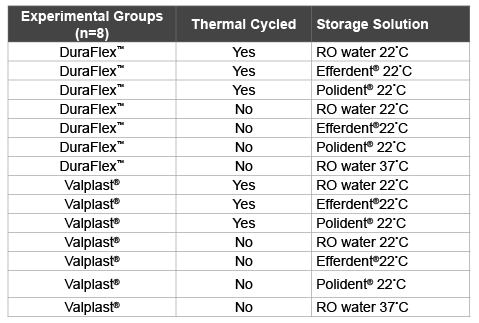
Table 1: Experimental groups, treatments, and storage solutions

James C Ragain Jr1* David E Umsted2 Brian R Morrow3 Creighton Powell4 Latoya Legrand4 Diane Chavis4 Russell A Wicks2 Franklin Garcia-Godoy3
1Department of Restorative Dentistry, College of Dentistry, University of Tennessee Health Science Center, Memphis, TN, USA*Corresponding author: James C Ragain Jr, Department of Restorative Dentistry, Suite N503, College of Dentistry, University of Tennessee Health Science Center, Memphis, TN, USA, Tel: 901-448-1323; E-mail: jragain@uthsc.edu
Clinical observations of flexible partial removable dental prostheses (FPRDP) indicate deteriorating physical properties often requiring replacement. Patients are advised to cleanse FPRDPs daily with denture cleansers. The purpose of this study was to investigate aging and denture cleansing effects on flexural strength and surface microhardness of FPRDPs.
Methods: Rectangular shaped (2.0 mm × 10.0 mm × 35.0 mm) specimens were prepared by a dental laboratory as clinical FPRDPs from DuraFlex™ and Valplast®. Specimens were divided into fourteen groups (n=8 per group) by respective group treatments and storage methods. Treatments were artificial aging (thermal cycled), no artificial aging, and physiological body temperature. Storage methods were reverse osmosis water (22°C and 37°C) and denture cleansers. Flexural strength was measured using three-point bending test in a universal testing machine. Microhardness determinations were made using a Vickers microhardness tester. Data were analyzed with three-way ANOVA and SNK post-hoc test (α=0.05) between baseline and 5,000 cycles.
Results: Significant differences in flexibility between DuraFlex™ and Valplast® occurred at baseline (p=0.027). Valplast® specimens became significantly more flexible in all treatments groups (p<0.001). DuraFlex™ experienced no significant change for flexural strength among any groups. Significant differences occurred between DuraFlex™ and Valplast® for Efferdent thermocycled (p=0.015), Polident thermocycled (p<0.001), and specimens stored at 37°C.
Conclusion: Decreased flexural strength in Valplast ® is perhaps related to water absorption. Thermocycling and elevated temperature storage had a minimalistic effect on microhardness in FPRDP materials. DuraFlex™ maintained its flexural strength and surface hardness, and Valplast® did not. In regards to surface hardness and flexural strength, Polident® appeared to be less deleterious to both DuraFlex™ and Valplast®. This study may help improve clinical recommendation for home cleansing advice to patients, FPRDP performance, and appearance.
Flexible partial dentures; Flexible denture base materials; Flexural strength; Microhardness; Denture cleansers; Artificial aging
When restoring edentulous spaces in the mouth, there are many options available to the dentist today. Partially edentulous patients often present challenging and difficult cases to clinicians. When treating these patients the primary goal of the restorative dentist is to restore form and function of the masticatory system to the patient. Also, most patients desire excellent esthetic results from dental prostheses. Options available to the dentists are partial removable dental prostheses, fixed partial dentures, and dental implants.
Dental implants restored with either fixed or removable appliances have rapidly become an acceptable treatment modality with excellent esthetics and very predictable results. However, not all patients are able to receive dental implant treatment due to clinical or financial limitations. In many of those cases, definitive restorative treatment with a partial removable dental prosthesis (PRDP) is a logical choice. Fabrication of PRDPs using one of the many flexible denture materials is an option that may be considered by the dentist.
Initially developed in the 1940’s [1], flexible partial removable dental prosthesis (FPRDP) materials were slow to gain acceptance due to their flexible nature. One commonly used FPRDP material is Valplast® (Figure 1) which is a thermoplastic polyamide resin (nylon) based material [2]. Valplast® was developed to improve upon conventional metal framework PRDPs in regards to esthetics and functional limitations [1,3]. It was developed primarily as an affordable long-term esthetic restoration [3]. Another popular FPRDP is DuraFlex™ (Figure 2) which is a thermoplastic polyolefin resin (ethylene propylene) material [4] that is translucent allowing the natural coloring of the tissue to show through the material causing DuraFlex™ to virtually disappear in the mouth.
The use of FPRDPs is now rapidly growing. General indications for treatment of partially edentulous spaces with the current flexible denture base materials are high esthetic demands of the patient, patients with metal sensitivity, compromised abutment teeth, provisional treatment as in implant or extraction healing sites, and cost [5]. With the emphasis on cosmetic dentistry came the desire for non-metallic retainers, and with the need to make the dental prosthesis more affordable for a large segment of the population came a desire for a less expensive alternative to conventional metal-based PRDPs. In a recent Clinicians Report survey, it was reported that 70% of all dentists are prescribing FPRDPs and 26% of all PRDPs are flexible [6].
Despite the apparent benefits that FPRDPs offer in selected cases, clinical observations often demonstrate that these partial dentures are prone to deteriorate quickly requiring replacement. Patients are advised to cleanse FPRDPs daily with any of the available over-the-counter denture cleansers. The objective of this study was to investigate the effects of two commercially available and commonly used denture cleansers on the flexural strength and surface microhardness of Valplast® and DuraFlex™.
Rectangular shaped specimens (rectangular dimensions: 2.0 mm thickness, 10.0 mm width, and 40.0 mm length) were prepared by a dental laboratory following the same techniques as those used to fabricate as clinical FPRDPs (Figure 3). The flexible partial denture materials studied were DuraFlex™, (The Myerson Company Limited, Laventille, Trinidad) and Valplast® (Valplast International Corporation, Long Island City, NY, USA). Fifty six specimens were made from each material. The specimens were divided into fourteen groups (n=8) by respective group treatments and storage solutions (Table 1).
The treatments consisted of (i) thermocycling(55°C and 5°C) for 5,000 cycles in reverse osmosis (RO) H₂O with storage in RO H₂O, Efferdent™, or Polident® , (ii) No thermocycling with storage in RO H₂O, Efferdent, or Polident® , and (iii) storage in RO H₂O 37°C. All specimen storage was maintained at 22°C representing normal cleansing except the RO H₂O 37°C groups representing without cleansing.
The denture cleansers used in this study were Efferdent™ (Johnson & Johnson, New Brunswick, NJ, USA) and Polident® (GlaxoSmithKline, Moon Township, PA, USA). All solutions were prepared as one measure of cleanser per 100 ml RO H₂O.
Baseline flexibility measurements were for all groups using a threepoint bend test. In this test flexural strength of a material is obtained when a load is applied to a simple beam which is supported at each end. This test is especially useful in comparing denture base materials in that it measures not only the strength of the material but also the amount of distortion. The flexural strength of a material is obtained when one loads a simple single beam, supported but not fixed at each end, with a load applied in the middle (Figure 1). The maximum stress measured in the test is called flexural strength [3].
The deformation of such a beam can be calculated as:
Deformation = Load × Length3/4 × Elastic modulus × Width × Thickness
Groups D and K served as controls for specimens not undergoing aging or cleansing treatments. They were stored in RO water at 22°C. Groups A, B, C, H, I, and J were subjected to the thermal cycling process in a Thermal Cycling Machine (Thermocycling Testing Apparatus, Sabri Dental Enterprises Inc., Downers Grove, IL, USA) to produce accelerated aging. The specimens were cycled between water tanks containing RO water (55°C and 5°C). The dwell time in each tank was thirty seconds with a ten second drip time prior to transfer to the other solution.
Flexural strength was determined at baseline and after the specimens undergoing thermocycling had completed 5,000 cycles using the three point bend test in a Universal Testing Machine (ElectroPuls E1000 Test System by Instron, Norwood, and MA., USA) crosshead speed of 1.0 mm/ min. Data were collected and recorded during each measurement step. Flexural strength (MPa) means and standard deviations were calculated for each experimental group. Surface hardness was measured with a Vickers hardness tester (Micromet 2103 Microhardness Tester by Buehler, Lake Bluff, IL) with 100 gf for hardness at the same time intervals as flexural strength measurements. Vickers hardness numbers (VHN) were determined and group means and standard deviations were recorded. Data were analyzed with three-way Analysis of variance and StudentNewman-Kuels post-hoc test (α-0.05).

Table 1: Experimental groups, treatments, and storage solutions
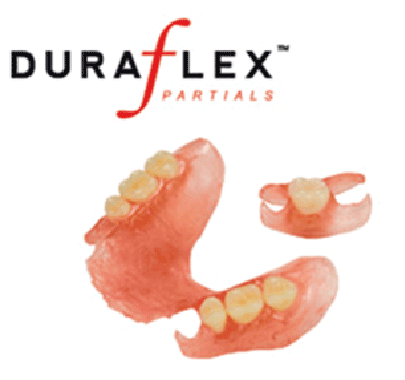
Figure 1: DuraFlex™ flexible partial dentures
Flexural strength (MPa) means and standard deviations are shown in the Table 2. Significant differences in flexibility between DuraFlex™ and Valplast® occurred at baseline (p=0.027). Valplast® specimens became significantly more flexible in all treatments groups (p<0.001). DuraFlex™ experienced no significant change for flexural strength among any groups.
The experimental group means and standard deviations of the surface microhardness (calculated as Vickers hardness numbers-VHN) are presented in Table 3.Significant differences occurred between DuraFlex™ and Valplast® for Efferdent thermocycled (p=0.015), Polident® thermocycled (p<0.001), and specimens stored at 37°C.
Both Valplast® and DuraFlex™ are thermoplastic materials, or thermo softening plastic, which is a plastic material or polymer that becomes pliable or moldable above a specific temperature and solidifies upon cooling [7]. Contemporary flexible partial dentures are fabricated primarily from either polyamide nylon or polyolefin polymers. As previously mentioned, Valplast® is principally a nylon and DuraFlex™ is a polyolefin polymer [2,4]. Physical and mechanical properties of these materials have been reported [8-10]. This study evaluated the effects of accelerated aging and commercially available denture cleansers on the flexural strength and microhardness of these materials. Thermal cycling is a method that has been used to accelerate the aging of denture base materials [11-16]. At least one study has investigated the effects of denture cleansers on these materials. A study by Durkan et al. [17] compared the effects of three denture cleansers on two flexible partial denture materials, including Valplast® .
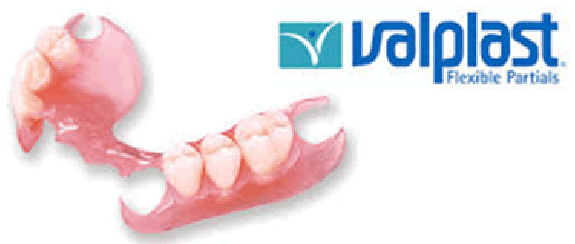
Figure 2: Valplast® flexible partial dentures
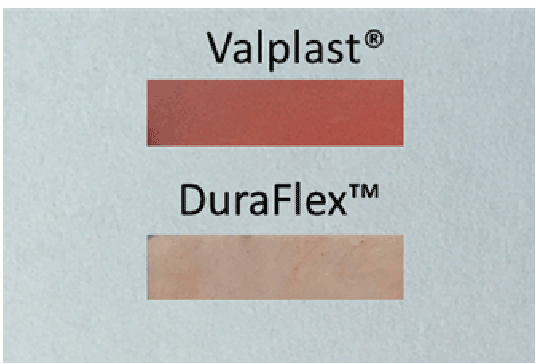
Figure 3: Typical flexible partial denture material specimens prepared for this study
Durkan found that surface roughness of the polyamides increased after [20] days of immersion in denture cleansers. This is clinically significant when considering the clinical life of the prosthesis and its resistance to plaque formation. The same study also found a decrease in the Vickers hardness values of polyamide resins after repeated immersions. It is difficult to directly compare the results of the Durkan study with the current study because the treatment methods were very different. The specimens in Durkan’s study were not subjected to accelerated aging, and the chemical compositions of the cleansers used were different. Also, the cleansing temperature in Durkan’s study was 50°C versus 22°C in the current study. The differences in these factors may explain the differences in microhardness results of the two studies.
The results of this study showed a significant difference in flexural strength between the two materials at baseline. This is probably due to the nature of the nylon material compared to the polyolefin material. Valplast® became significantly more flexible for all treatment groups. This decrease in flexural strength is perhaps related to water sorption. Nylon is a generic designation for a family of synthetic polymers, more specifically aliphatic or semi-aromatic polyamides. They can be melt processed into fibers, films or shapes [18]. Nylons absorb moisture in equilibrium with the relative humidity of their immediate surroundings [19,20]. Most nylon polymers have an unusual affinity for water [21].
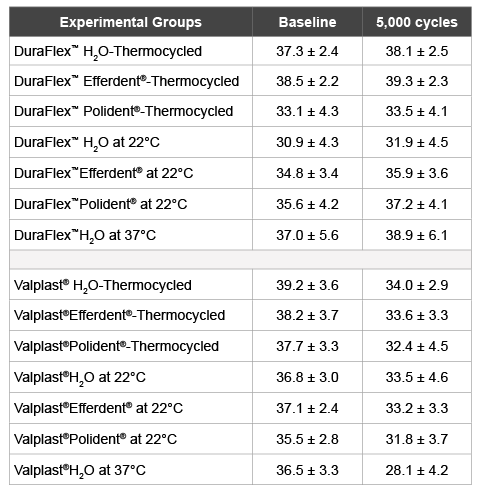
Table 2: Flexural strength (MPa) results means and ± standard deviations
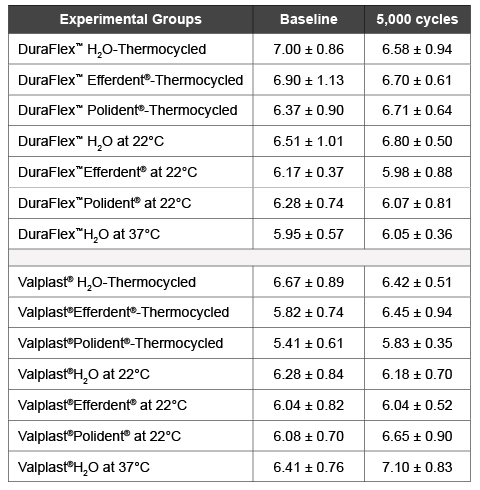
Table 3: Vickers microhardness (VHN) results means and ± standard deviation
Significant differences were found between DuraFlex™ and Valplast® for both Efferdent® and Polident® thermocycled groups (p=0.015) and p<0.001 respectively) in regard to increases in surface microhardness. Specimens stored at 37°C also demonstrated a significant difference between the materials with Valplast® demonstrating an increase in hardness. This finding is in agreement with study by Goiato et al. Goiato found that accelerated aging caused a significant increase in microhardness. This is likely the result of continued polymerization. Several studies [23-25] have shown that elastomers exhibit continuous polymerization shrinkage from initial polymerization until after complete clinical set of the material. This suggests that surface hardness of partial dentures fabricated from these flexible materials might increase as the partial denture ages regardless of the storage or cleansing solution.
Within the parameters of this study the following can be concluded:
This study may help improve clinical recommendation for home cleansing advice to patients, FPRDP performance, and appearance. In spite of the increased use of FPRDPs, there is a lack of evidence based literature on the materials used to fabricate flexible partials. More independent studies are needed concerning the long term stability of these materials.
This study was funded in part by the University of Tennessee Health Science Center College of Dentistry Alumni Endowment Fund and the Tennessee Dental Association Foundation.
Download Provisional PDF Here
Aritcle Type: Research Article
Citation: Ragain Jr JC, Umsted DE, Morrow BR, Powell C, Legrand L, et al. (2015) Effects of Aging and Denture Cleansers on the Flexural Strength and Surface Microhardness of Two Flexible Denture Materials. Int J Dent Oral Health 1(6): doi http://dx.doi. org/10.16966/2378-7090.132
Copyright: © 2015 Ragain Jr JC, et al. This is an open-access article distributed under the terms of the Creative Commons Attribution License, which permits unrestricted use, distribution, and reproduction in any medium, provided the original author and source are credited.
Publication history:
All Sci Forschen Journals are Open Access